Hyunsung Kim
DBHP: Trajectory Imputation in Multi-Agent Sports Using Derivative-Based Hybrid Prediction
Aug 20, 2024



Abstract:Many spatiotemporal domains handle multi-agent trajectory data, but in real-world scenarios, collected trajectory data are often partially missing due to various reasons. While existing approaches demonstrate good performance in trajectory imputation, they face challenges in capturing the complex dynamics and interactions between agents due to a lack of physical constraints that govern realistic trajectories, leading to suboptimal results. To address this issue, the paper proposes a Derivative-Based Hybrid Prediction (DBHP) framework that can effectively impute multiple agents' missing trajectories. First, a neural network equipped with Set Transformers produces a naive prediction of missing trajectories while satisfying the permutation-equivariance in terms of the order of input agents. Then, the framework makes alternative predictions leveraging velocity and acceleration information and combines all the predictions with properly determined weights to provide final imputed trajectories. In this way, our proposed framework not only accurately predicts position, velocity, and acceleration values but also enforces the physical relationship between them, eventually improving both the accuracy and naturalness of the predicted trajectories. Accordingly, the experiment results about imputing player trajectories in team sports show that our framework significantly outperforms existing imputation baselines.
Contextual Sprint Classification in Soccer Based on Deep Learning
Jun 21, 2024Abstract:The analysis of high-intensity runs (or sprints) in soccer has long been a topic of interest for sports science researchers and practitioners. In particular, recent studies suggested contextualizing sprints based on their tactical purposes to better understand the physical-tactical requirements of modern match-play. However, they have a limitation in scalability, as human experts have to manually classify hundreds of sprints for every match. To address this challenge, this paper proposes a deep learning framework for automatically classifying sprints in soccer into contextual categories. The proposed model covers the permutation-invariant and sequential nature of multi-agent trajectories in soccer by deploying Set Transformers and a bidirectional GRU. We train the model with category labels made through the collaboration of human annotators and a rule-based classifier. Experimental results show that our model classifies sprints in the test dataset into 15 categories with the accuracy of 77.65%, implying the potential of the proposed framework for facilitating the integrated analysis of soccer sprints at scale.
Ball Trajectory Inference from Multi-Agent Sports Contexts Using Set Transformer and Hierarchical Bi-LSTM
Jun 14, 2023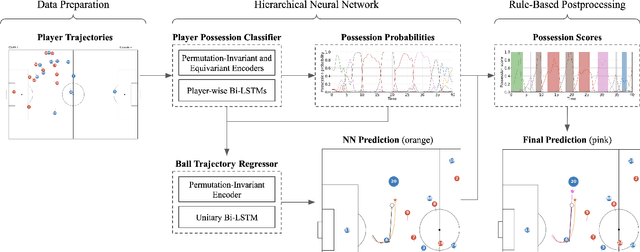
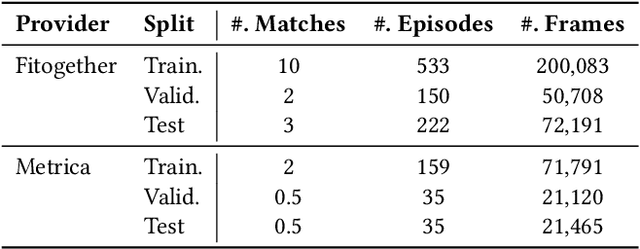
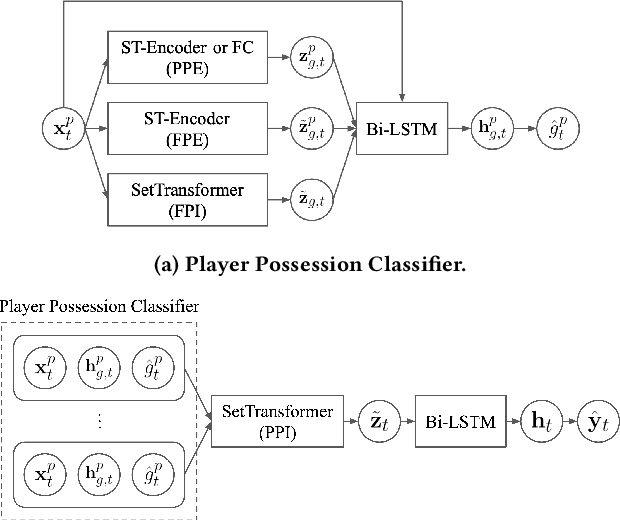
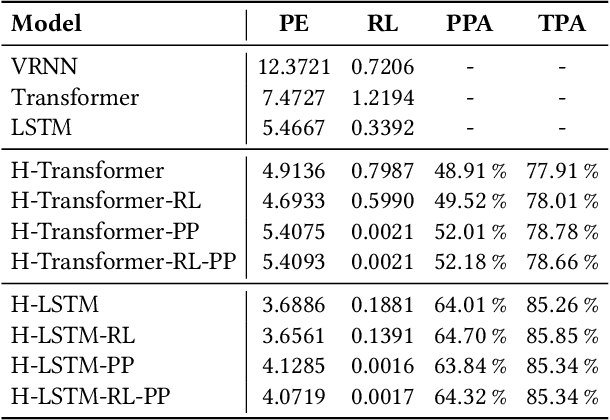
Abstract:As artificial intelligence spreads out to numerous fields, the application of AI to sports analytics is also in the spotlight. However, one of the major challenges is the difficulty of automated acquisition of continuous movement data during sports matches. In particular, it is a conundrum to reliably track a tiny ball on a wide soccer pitch with obstacles such as occlusion and imitations. Tackling the problem, this paper proposes an inference framework of ball trajectory from player trajectories as a cost-efficient alternative to ball tracking. We combine Set Transformers to get permutation-invariant and equivariant representations of the multi-agent contexts with a hierarchical architecture that intermediately predicts the player ball possession to support the final trajectory inference. Also, we introduce the reality loss term and postprocessing to secure the estimated trajectories to be physically realistic. The experimental results show that our model provides natural and accurate trajectories as well as admissible player ball possession at the same time. Lastly, we suggest several practical applications of our framework including missing trajectory imputation, semi-automated pass annotation, automated zoom-in for match broadcasting, and calculating possession-wise running performance metrics.
SoccerCPD: Formation and Role Change-Point Detection in Soccer Matches Using Spatiotemporal Tracking Data
Jun 22, 2022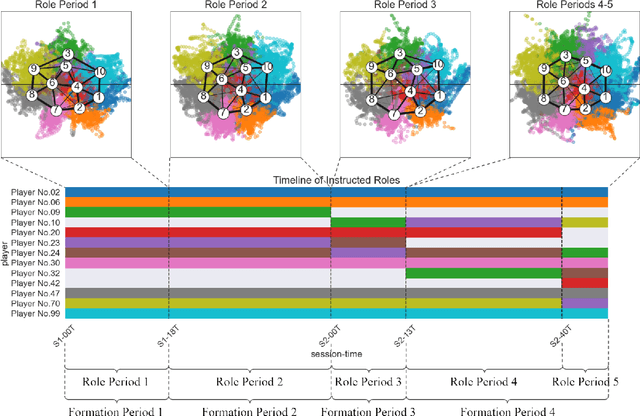
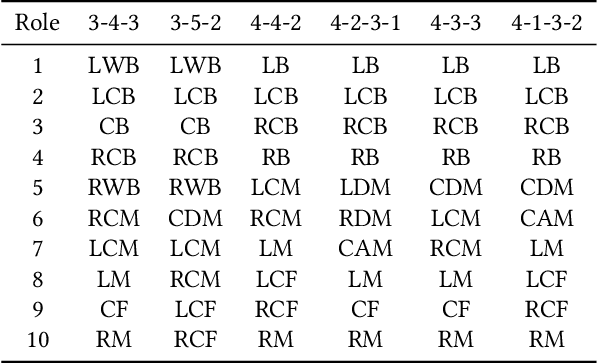
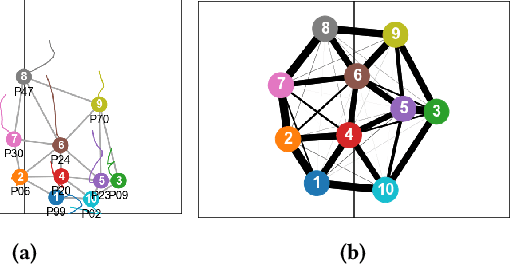

Abstract:In fluid team sports such as soccer and basketball, analyzing team formation is one of the most intuitive ways to understand tactics from domain participants' point of view. However, existing approaches either assume that team formation is consistent throughout a match or assign formations frame-by-frame, which disagree with real situations. To tackle this issue, we propose a change-point detection framework named SoccerCPD that distinguishes tactically intended formation and role changes from temporary changes in soccer matches. We first assign roles to players frame-by-frame and perform two-step change-point detections: (1) formation change-point detection based on the sequence of role-adjacency matrices and (2) role change-point detection based on the sequence of role permutations. The evaluation of SoccerCPD using the ground truth annotated by domain experts shows that our method accurately detects the points of tactical changes and estimates the formation and role assignment per segment. Lastly, we introduce practical use-cases that domain participants can easily interpret and utilize.
Integrated In-vehicle Monitoring System Using 3D Human Pose Estimation and Seat Belt Segmentation
Apr 17, 2022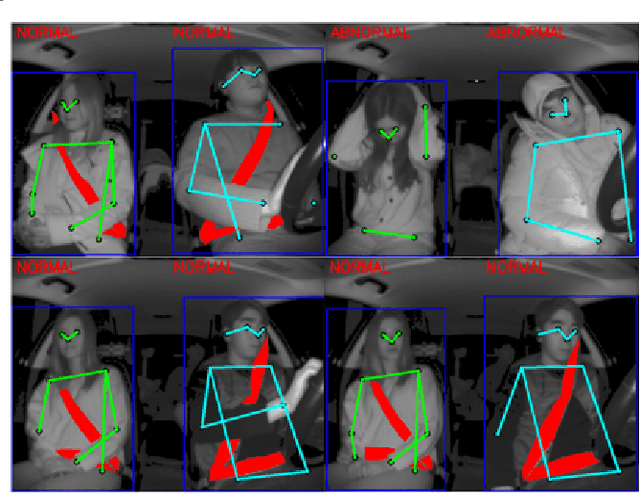

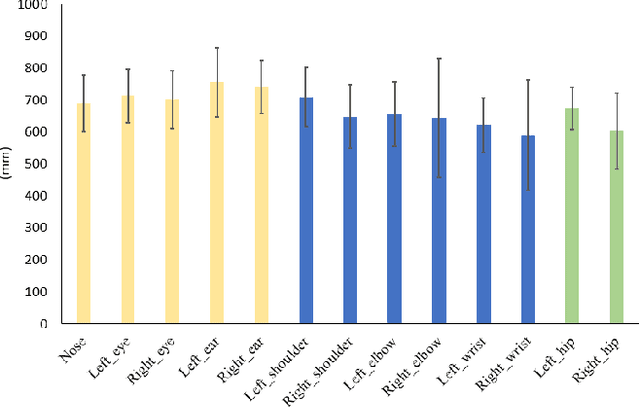
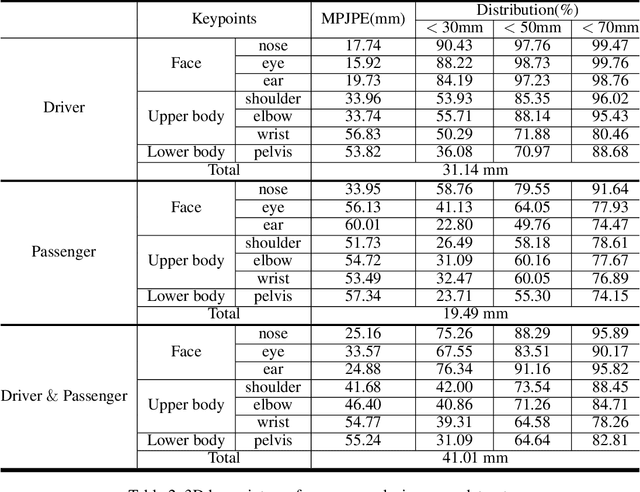
Abstract:Recently, along with interest in autonomous vehicles, the importance of monitoring systems for both drivers and passengers inside vehicles has been increasing. This paper proposes a novel in-vehicle monitoring system the combines 3D pose estimation, seat-belt segmentation, and seat-belt status classification networks. Our system outputs various information necessary for monitoring by accurately considering the data characteristics of the in-vehicle environment. Specifically, the proposed 3D pose estimation directly estimates the absolute coordinates of keypoints for a driver and passengers, and the proposed seat-belt segmentation is implemented by applying a structure based on the feature pyramid. In addition, we propose a classification task to distinguish between normal and abnormal states of wearing a seat belt using results that combine 3D pose estimation with seat-belt segmentation. These tasks can be learned simultaneously and operate in real-time. Our method was evaluated on a private dataset we newly created and annotated. The experimental results show that our method has significantly high performance that can be applied directly to real in-vehicle monitoring systems.
6MapNet: Representing soccer players from tracking data by a triplet network
Sep 10, 2021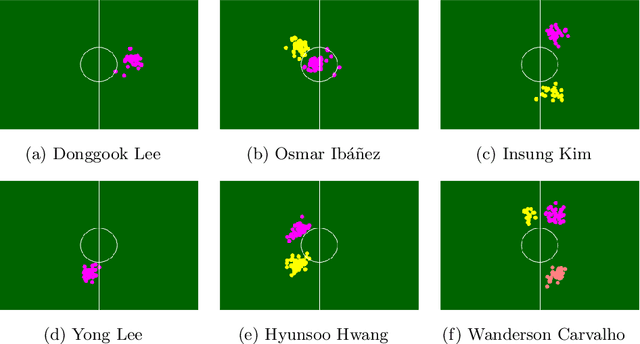
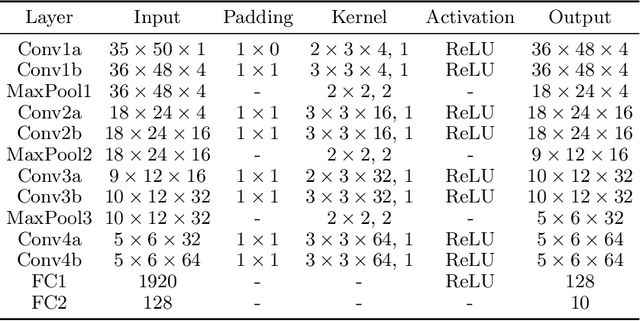
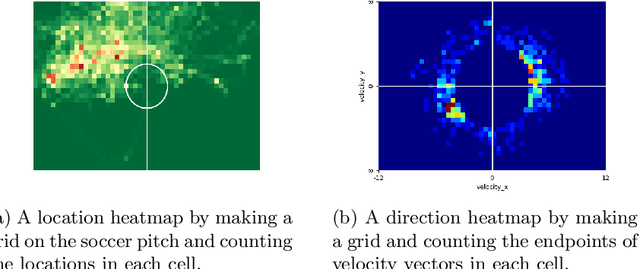
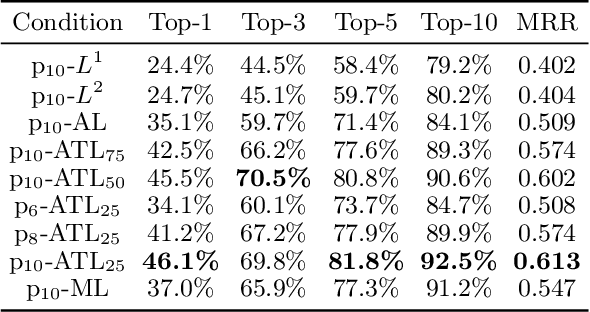
Abstract:Although the values of individual soccer players have become astronomical, subjective judgments still play a big part in the player analysis. Recently, there have been new attempts to quantitatively grasp players' styles using video-based event stream data. However, they have some limitations in scalability due to high annotation costs and sparsity of event stream data. In this paper, we build a triplet network named 6MapNet that can effectively capture the movement styles of players using in-game GPS data. Without any annotation of soccer-specific actions, we use players' locations and velocities to generate two types of heatmaps. Our subnetworks then map these heatmap pairs into feature vectors whose similarity corresponds to the actual similarity of playing styles. The experimental results show that players can be accurately identified with only a small number of matches by our method.
 Add to Chrome
Add to Chrome Add to Firefox
Add to Firefox Add to Edge
Add to Edge